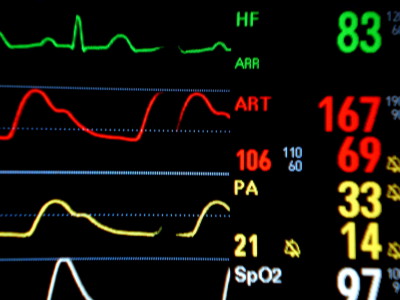In some cases, even in a coma where you can't talk or move, you have a ``hidden consciousness'' that can recognize the surrounding situation, and in that case it is clear that there is a strong possibility of recovery

The scientific journal Scientific American summarizes that there are cases where even in a coma where you can neither speak nor move, you can recognize the world around you.
Some People Who Appear to Be in a Coma May Actually Be Conscious - Scientific American
One July, Maria Mazurkevich, a 30-year-old woman, was admitted to the New York Presbyterian Hospital. Mr. Mazurkevich said that a blood vessel in the brain had burst and the bleeding had put a lot of pressure on an important area of the brain, causing him to be unconscious and hospitalized in a serious condition. While in the hospital, Mazurkevich was on a ventilator, and although her vital signs were stable, she remained unconscious. The hospital's medical team was looking for signs that Mazurkevich could hear them, asking her to open her eyes and move her fingers and wiggle her toes. However, it seems that there was no movement.
A medical team then examined Mazurkevich's brain waves by placing sensors on his head to monitor his brain's electrical activity. After the medical team asked me to continue opening and closing my right hand, I asked him to stop opening and closing my right hand. Although Mazurkevich's right hand did not move at the time, it turned out that his brain activity patterns differed between the two requests. In other words, this correctly recognized two requests from the comatose Mr. Mazurkevich, 'Keep opening and closing your right hand' and 'Stop opening and closing your right hand', as different requests. This indicates that the
About a week after the test, Mr. Mazurkevich gradually woke up, and by the time a year had passed, he had succeeded in recovering completely without major limitations in physical and cognitive abilities. The medical team expresses that Mr. Mazurkevich, who was in a coma, was conscious as ``hidden consciousness''. This ``hidden consciousness'' is said to refer to ``a state in which the brain understands things to some extent and responds to the outside world, although the body does not react''.

When medical teams performed advanced brain activity measurements, such as
The standard definition of a comatose patient is 'unconscious, incapable of awakening, without any signs of consciousness or ability to interact with the environment.' People in a coma caused by severe brain damage often cannot breathe on their own and require ventilator support with a tube inserted into their airways. However, in most cases, other than this state of 'wearing a respirator', it is indistinguishable from a sleeping person.
Some people may think that recovering from a coma is easy, but in reality, people recovering from a coma caused by severe brain damage need a feeding tube and a tracheostomy tube for breathing. It is attached and requires rehabilitation for several weeks to several months even after regaining consciousness. Also, recovery from a coma is very subtle and difficult to predict. However, Scientific American said, ``Many people think that all patients in a coma are destined to die without recovering from the coma, or to live with severe disabilities, but that is not the case. ”, He said that the overly pessimistic view of comatose patients is also wrong.

Views on coma and consciousness have changed among medical professionals over time. In the 1960s, neurologists and neurosurgeons noted that some comatose patients opened their eyes but showed no interaction with the environment. Many experts at the time believed that the patient remained in this state until death, and some clinicians believed that such loss of consciousness was irretrievable.
However, in the 1990s, cases of regaining consciousness in patients in a vegetative state began to appear in the medical literature. A vegetative state differs from a coma in that the patient may open and close their eyes, but no intentional response is present. Anecdotes of recovery from this state have prompted the fields of neurocritical care and rehabilitation medicine to develop more fine-tuned classifications such as the 'minimally conscious state'. Patients in a minimally conscious state show non-verbal responses, such as tracking objects with their eyes and intermittently following commands. It is also clear that there is a higher possibility of
And the newly discovered 'hidden consciousness' is also an important indicator that recovery from a coma can be expected like a minimally conscious state. If the injury is severe enough to cause a coma, the patient's family must decide whether to continue or stop life-sustaining treatment within 10 to 14 days after the injury. Life-sustaining treatments place a heavy emotional and financial burden on the patient's family because of the long-term need to continue breathing and nourishment. Therefore, 'hidden consciousness', which is an early indicator of whether consciousness is likely to recover, may play a very important role.
On the other hand, although electroencephalogram (EEG) measurement and MRI examination are used to detect 'hidden consciousness', Scientific American points out that these have limitations. For example, it seems that there are multiple cases where brain activity could not be detected by EEG or MRI, but later recovered from a coma. Also, both EEG and MRI can be hampered in detecting brain activity by sedation, which may be necessary for the safety or comfort of critically injured patients. In addition, Scientific American points out that MRI needs to be taken in a dedicated examination room, which may expose the patient to the risk of transporting it from the intensive care unit. In addition, since MRI cannot be easily and repeatedly imaged, it has the disadvantage that it can only be used to determine 'whether or not the patient was conscious' in a very short period of time. EEG can be used next to the patient, but it seems to have the disadvantage that the detected value changes due to electrical noise generated from electronic equipment placed in the intensive care unit.
However, although both methods need improvement, they are recommended for use in diagnosing the presence of the subconscious in American and European clinical guidelines, and their usefulness has been well demonstrated. can be said. In addition, experts working in this field are working on the development of new methods for detecting ``hidden consciousness,'' and are exploring the use of brain-machine interfaces .
Related Posts:
in Science, Posted by logu_ii







